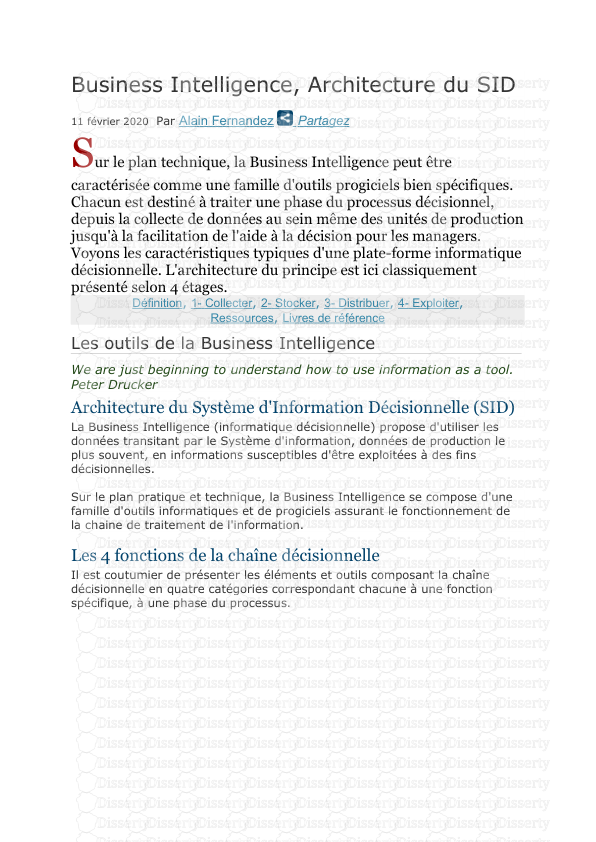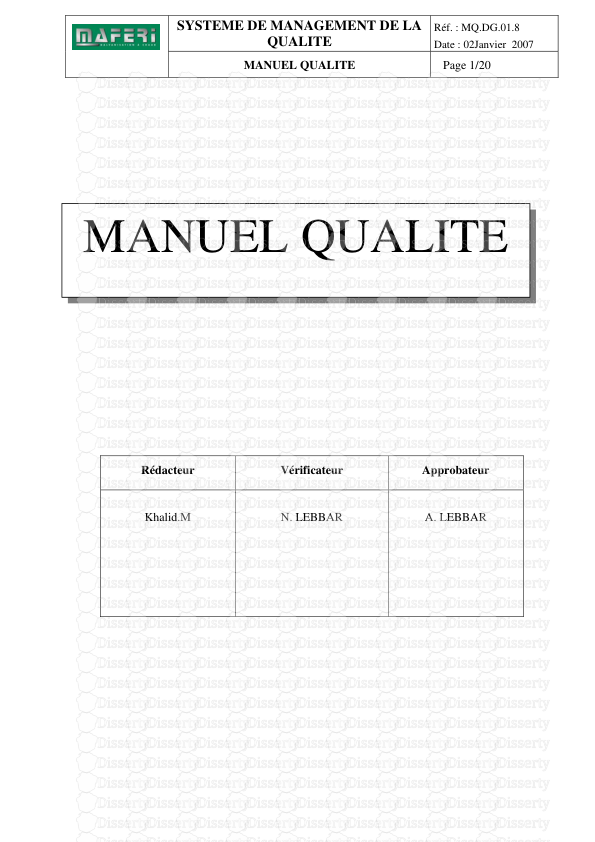M19/3/BUSMT/HP1/ENG/TZ0/XX/M 18 pages Markscheme May 2019 Business management H
M19/3/BUSMT/HP1/ENG/TZ0/XX/M 18 pages Markscheme May 2019 Business management Higher level Paper 1 – 2 – M19/3/BUSMT/HP1/ENG/TZ0/XX/M No part of this product may be reproduced in any form or by any electronic or mechanical means, including information storage and retrieval systems, without written permission from the IB. Additionally, the license tied with this product prohibits commercial use of any selected files or extracts from this product. Use by third parties, including but not limited to publishers, private teachers, tutoring or study services, preparatory schools, vendors operating curriculum mapping services or teacher resource digital platforms and app developers, is not permitted and is subject to the IB’s prior written consent via a license. More information on how to request a license can be obtained from http:// www.ibo.org/contact-the-ib/media-inquiries/for-publishers/guidance-for- third-party-publishers-and-providers/how-to-apply-for-a-license. Aucune partie de ce produit ne peut être reproduite sous quelque forme ni par quelque moyen que ce soit, électronique ou mécanique, y compris des systèmes de stockage et de récupération d’informations, sans l’autorisation écrite de l’IB. De plus, la licence associée à ce produit interdit toute utilisation commerciale de tout fichier ou extrait sélectionné dans ce produit. L’utilisation par des tiers, y compris, sans toutefois s’y limiter, des éditeurs, des professeurs particuliers, des services de tutorat ou d’aide aux études, des établissements de préparation à l’enseignement supérieur, des fournisseurs de services de planification des programmes d’études, des gestionnaires de plateformes pédagogiques en ligne, et des développeurs d’applications, n’est pas autorisée et est soumise au consentement écrit préalable de l’IB par l’intermédiaire d’une licence. Pour plus d’informations sur la procédure à suivre pour demander une licence, rendez-vous à l’adresse http://www.ibo.org/fr/contact-the-ib/media-inquiries/for-publishers/ guidance-for-third-party-publishers-and-providers/how-to-apply-for-a- license. No se podrá reproducir ninguna parte de este producto de ninguna forma ni por ningún medio electrónico o mecánico, incluidos los sistemas de almacenamiento y recuperación de información, sin que medie la autorización escrita del IB. Además, la licencia vinculada a este producto prohíbe el uso con fines comerciales de todo archivo o fragmento seleccionado de este producto. El uso por parte de terceros —lo que incluye, a título enunciativo, editoriales, profesores particulares, servicios de apoyo académico o ayuda para el estudio, colegios preparatorios, desarrolladores de aplicaciones y entidades que presten servicios de planificación curricular u ofrezcan recursos para docentes mediante plataformas digitales— no está permitido y estará sujeto al otorgamiento previo de una licencia escrita por parte del IB. En este enlace encontrará más información sobre cómo solicitar una licencia: http://www.ibo.org/es/contact-the-ib/media-inquiries/for-publishers/ guidance-for-third-party-publishers-and-providers/how-to-apply-for-a- license. – 3 – M19/3/BUSMT/HP1/ENG/TZ0/XX/M The markbands and assessment criteria on pages 5–8 should be used where indicated in the markscheme. Section A Level descriptor Q1 (b) Q2 (b) Q3 (b) Marks 0 The work does not reach a standard described by the descriptors below. 1–2 • Little knowledge and understanding of relevant issues and business management tools (where applicable), techniques and theories. • Little use of business management terminology. • Little reference to the stimulus material. 3–4 • A description or partial analysis of some relevant issues with some use of business management tools (where applicable), techniques and theories. • Some use of appropriate terminology. • Some reference to the stimulus material that goes beyond the name of a person(s) and/or the name of the organization. • At the lower end of the markband, responses are mainly theoretical. 5–6 • An analysis of the relevant issues with good use of business management tools (where applicable), techniques and theories. • Use of appropriate terminology throughout the response. • Effective use of the stimulus material. – 4 – M19/3/BUSMT/HP1/ENG/TZ0/XX/M Section B Q4 (d) Level descriptor Marks 0 The work does not reach a standard described by the descriptors below. 1–2 • Little understanding of the demands of the question. • Few business management tools (where applicable), techniques and theory are explained or applied and business management terminology is lacking. • Little reference to the stimulus material. 3–4 • Some understanding of the demands of the question. • Some relevant business management tools (where applicable), techniques and theories are explained or applied, and some appropriate terminology is used. • Some reference to the stimulus material but often not going beyond the name of a person(s) and/or the name of the organization. 5–6 • Understanding of most of the demands of the question. • Relevant business management tools (where applicable), techniques and theories are explained and applied, and appropriate terminology is used most of the time. • Some reference to the stimulus material that goes beyond the name of a person(s) and/or the name of the organization. • Some evidence of a balanced response. • Some judgments are relevant but not substantiated. 7–8 • Good understanding of the demands of the question. • Relevant business management tools (where applicable), techniques and theories are explained and applied well, and appropriate terminology is used. • Good reference to the stimulus material. • Good evidence of a balanced response. • The judgments are relevant but not always well substantiated. 9–10 • Good understanding of the demands of the question, including implications, where relevant. • Relevant business management tools (where applicable), techniques and theories are explained clearly and applied purposefully, and appropriate terminology is used throughout the response. • Effective use of the stimulus material in a way that significantly strengthens the response. • Evidence of balance is consistent throughout the response. • The judgments are relevant and well substantiated. – 5 – M19/3/BUSMT/HP1/ENG/TZ0/XX/M Section C, question 5 Criterion A: Knowledge and understanding of tools, techniques and theories This criterion addresses the extent to which the candidate demonstrates knowledge and understanding of relevant business management tools, techniques and theories, as stated and/or implied by the question. This includes using appropriate business management terminology. Marks Level descriptor 0 The work does not reach a standard described by the descriptors below. 1 Superficial knowledge of relevant tools, techniques and theory is demonstrated. 2 Satisfactory knowledge and understanding of relevant tools, techniques and theories is demonstrated. 3 Good knowledge and understanding of relevant tools, techniques and theories is generally demonstrated, though the explanation may lack some depth or breadth. 4 Good knowledge and understanding of relevant tools, techniques and theories is demonstrated. Criterion B: Application This criterion addresses the extent to which the candidate is able to apply the relevant business management tools, techniques and theories to the case study organization. Marks Level descriptor 0 The work does not reach a standard described by the descriptors below. 1 The relevant business management tools, techniques and theories are connected to the case study organization, but this connection is inappropriate or superficial. 2 The relevant business management tools, techniques and theories are appropriately connected to the case study organization, but this connection is not developed. 3 The relevant business management tools, techniques and theories are generally well applied to explain the situation and issues of the case study organization, though the explanation may lack some depth or breadth. Examples are provided. 4 The relevant business management tools, techniques and theories are well applied to explain the situation and issues of the case study organization. Examples are appropriate and illustrative. Criterion C: Reasoned arguments This criterion assesses the extent to which the candidate makes reasoned arguments. This includes making relevant and balanced arguments by, for example, exploring different practices, weighing up their strengths and weaknesses, comparing and contrasting them or considering their implications, depending on the requirements of the question. It also includes justifying the arguments by presenting evidence for the claims made. Marks Level descriptor 0 The work does not reach a standard described by the descriptors below. 1 Statements are made but these are superficial. 2 Relevant arguments are made but these are mostly unjustified. 3 Relevant arguments are made and these are mostly justified. 4 Relevant, balanced arguments are made and these are well justified. – 6 – M19/3/BUSMT/HP1/ENG/TZ0/XX/M Criterion D: Structure This criterion assesses the extent to which the candidate organizes his or her ideas with clarity, and presents a structured piece of writing comprised of: • an introduction • a body • a conclusion • fit-for-purpose paragraphs. Marks Level descriptor 0 The work does not reach a standard described by the descriptors below. 1 Two or fewer of the structural elements are present, and few ideas are clearly organized. 2 Three of the structural elements are present, or most ideas are clearly organized. 3 Three or four of the structural elements are present, and most ideas are clearly organized. 4 All of the structural elements are present, and ideas are clearly organized. Criterion E: Individual and societies This criterion assesses the extent to which the candidate is able to give balanced consideration to the perspectives of a range of relevant stakeholders, including individuals and groups internal and external to the organization. Marks Level descriptor 0 The work does not reach a standard described by the descriptors below. 1 One individual or group perspective is considered superficially or inappropriately. 2 One relevant individual or group perspective is considered appropriately, or two relevant individual or group perspectives are considered superficially or inappropriately. 3 At least two relevant individual or uploads/Industriel/business-management-paper-1-hl-markscheme 1 .pdf
Documents similaires










-
41
-
0
-
0
Licence et utilisation
Gratuit pour un usage personnel Attribution requise- Détails
- Publié le Sep 27, 2022
- Catégorie Industry / Industr...
- Langue French
- Taille du fichier 0.4345MB


